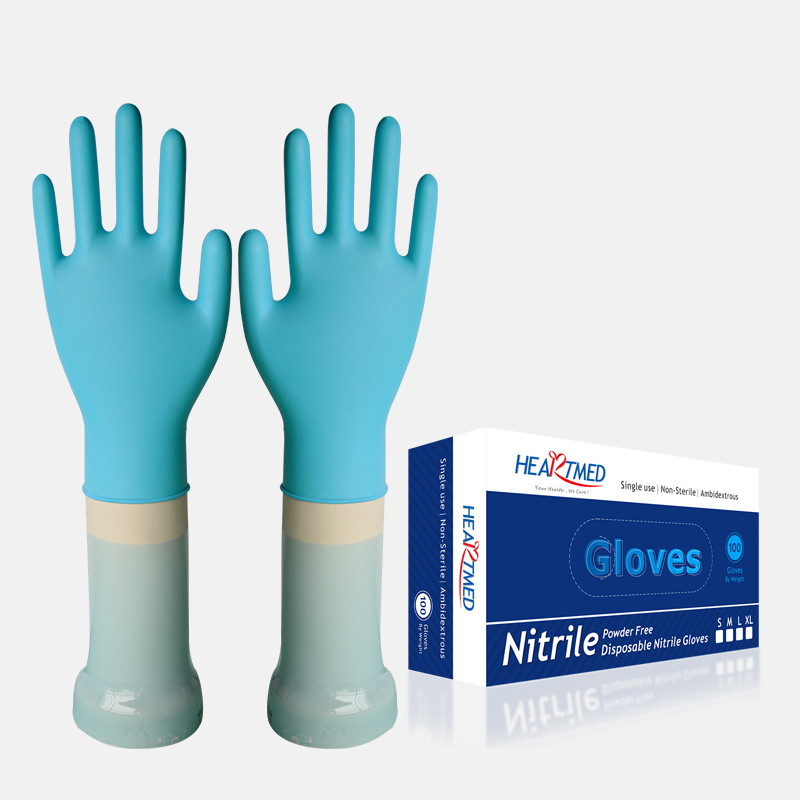What’s Shelf Life Of Nitrile And Latex Gloves

As many of you already know, the use of disposable gloves is widespread to nearly every industry. Disposable gloves specifically are primarily found in food service, medical, and manufacturing industries. And to narrow it down even more, disposable glove use in these industries are used frequently for short durations. With that, the cost of keeping up with disposable glove use can get quite expensive for employers.
Something you might notice as you shop for disposable gloves is that manufacturers are attempting to help reduce cost by producing gloves that are thinner and more cost effective. It is a common problem in many industries where employees are required to change their gloves with every new task, and of course in the event that gloves get ripped. When every employee is going through up to 20 gloves per day, you’re looking at significant cost savings by switching to a thinner glove.
You might be wondering, If the glove is thinner, doesn’t that mean it won’t protect me?” While this is a valid question that many people have, you can rest assured that glove manufacturers are working hard to develop new and innovative glove designs that maintain the needed protection, while offering a much thinner glove. With this new technology and glove production, the new standard for disposable gloves has dropped to 3 mil from the previous 4-5 range. The added bonus of a thinner glove is increased flexibility and dexterity, which makes workers more willing to wear their gloves since they are still able to perform their jobs without interference.
This trend is primarily taking place with disposable nitrile gloves, which have become more widespread for their many benefits over natural latex gloves. Nitrile gloves do not have the allergy risks that latex does and nitrile does not breakdown when it comes in contact with certain chemicals as latex does. Nitrile has also proven to have better puncture resistance, making it more popular and allows it to be manufactured in a thinner style without losing its inherent protection.
Many times when you buy disposable gloves in bulk for your office or work place, the gloves can sit in the storage room for quite some time. How do you know that when you get around to using those gloves at the back of the shelf, they’ll still offer the same level of protection as when they were first manufactured and shipped. Keep reading to learn about some helpful guidelines that will help you know how long you can keep your disposable nitrile and latex gloves on the shelf.
Shelf Life Guidelines
While an exact shelf life time period is dependent on what specific material the gloves are made of and storage facilities, a general rule of thumb is three years for disposable natural latex gloves and up to five years for disposable nitrile gloves.
While most manufacturers won’t guarantee it, many Nitrile Disposable Gloves have been known to last up to 10 years in storage without any obvious or significant damage. Keep in mind, however, that these shelf lives do not apply to gloves that are removed from the original packaging or have been exposed to moisture.
If you pull some gloves off the shelf and they look relatively “normal”, meaning, they can be stretched without visible surface cracks and can be donned without ripping or tearing, then they are probably still safe to use and will provide the appropriate level of protection that you need. Gloves that are unsafe to use will be pretty obvious. They will have become quite brittle, tearing very easily and will have a hardened exterior that cracks easily when stretched.
Storage Guidelines
There are many tips to consider upholding when it comes to storing your disposable latex and nitrile gloves, which will help maximize the shelf life of your gloves.
DO NOT store gloves in an area where they are exposed to ultraviolet light or ozone for extended periods of time. DO NOT store gloves in areas where the temperature is greater than 90 degrees Fahrenheit. DO NOT break the seal on glove packaging unless you’re ready to use those gloves. If left opened for a long period of time, those gloves risk becoming damaged and rendered unusable or unsterile.
DO store your disposable nitrile and Latex Gloves in a space that is cool and dark. DO store your gloves in an area where they are not exposed to ozone and UV light. This includes lights like florescent bulbs and some electrical equipment that can generate ozone. *Natural latex gloves are particularly sensitive to these types of lights and can be damaged easily from exposure. DO store your gloves far away from heat sources like radiators or steam pipes.
Foarte bine explicat, multumesc pentru informatie!
Multumesc pentru informatie!